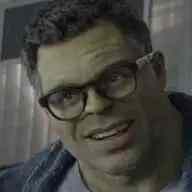Visual effects artists (VFX artists) are now more essential than ever in Hollywood. Right now the box office is being dominated by “Avengers: Endgame” and “Detective Pikachu,” with both movies requiring extensive use of visual effects. If you’ve ever sat around during the credits of a Marvel movie waiting for the post-credits scene, you may have noticed that the VFX section has the most names under it by far. What exactly do those people do? And what are their lives like?
The different kinds of VFX artists

As you might expect, there’re very few general VFX artists in the movie industry. Every frame of a CGI-heavy movie has hundreds of different factors that go into it, requiring a large team of specialized VFX artists. Here are just a few of them:
Rotoscoping
Rotoscoping is a technique where animation is drawn over live-action footage to create fluid, realistic animation, sometimes combining it with live-action characters. This technique has been in place since the earliest days of animation, and it is the technique Walt Disney and his team used to create the revolutionary animation of “Snow White and the Seven Dwarfs.”
In many of today’s blockbuster films, live-action characters must interact seamlessly with CGI characters, usually in front of a green screen or a partially-built set. In the picture above, Iron Man fights against Thanos on the planet Titan. Since Iron Man’s suit is damaged, parts of Tony Stark’s exposed suitless body are in frame for most of the scene. Rotoscope artists must painstakingly go over every frame of the scene, drawing the Iron Man suit partially over Robert Downey Jr’s body. They must also make sure RDJ fits seamlessly into the mostly-CGI scene by composing objects and scenery realistically behind him.

New MCU secrets shared by Marvel Studios president Kevin Feige
Modeling/Rigging
Modelers use computer programs to shape 3D objects and characters in a process extremely similar to sculpting. To realistically sculpt, modelers often pay close attention to real-life reference photos and concept art, though sometimes modelers even sculpt their objects from scratch.
Depending on the object or creature, the model is passed off to various other artists upon completion. Texture artists add realistic surfaces to the objects, making sure the texture reflects whatever the object is supposed to be (ex adding wrinkles and pores for skin, or adding rust and paint to a metallic spaceship). For creatures that require realistic fur, such as the fuzzy Detective Pikachu, groomers are in charge of creating the look of the fur and tuning how it behaves in various situations (such as blowing in the wind, getting wet, or getting dirty).

5 best looking and worst looking Pokémon in Detective Pikachu
After a person or creature is sculpted by a modeler, it is the job of riggers to make it so that creature can move realistically (or stylistically). Riggers add digital skeletons to the creature models, giving it a defined and realistic set of parameters on how it can move. Highly detailed creatures, like Legendary Pictures’ Godzilla, also feature a complex underlying system of muscles and skin that give weight and heft to the creature’s movement. A complex understanding of anatomy is essential to a rigger’s job.
Excited for King of the Monsters? Here’s a brief guide to Godzilla
Tracking
Tracking is an understated but vitally important job for VFX artists. Basically, a tracker’s job is to track the position and movement of the camera in order to make sure both live-action and digital objects move realistically within a heavily digitized scene. If objects aren’t properly kept track of, they will appear to “float” in a scene, completely destroying the illusion that it is actually there. A tracker must make sure it appears that it appears as if a real camera was filming a shot where everything inside it is real. If CGI and live-action objects combine in the shot to look realistic as the camera moves, the illusion is created that the film crew is filming something that is actually there, no matter how CGI-heavy the scene is.
Avengers: Infinity War
What is it like to be a VFX artist in 2019?
Despite being responsible for dazzling audiences with beautiful digital effects and iconic characters, VFX artists live a harsh life. Digital effects are a relatively new field of work in the movie industry compared to other jobs, so efforts to regulate or unionize VFX jobs are few and far in-between.
As a result, VFX artists must endure an incredibly volatile job market , with job stability being incredibly low. VFX artists frequently work in contract positions, sometimes for a decade or more. In addition to denying them access to benefits such as healthcare, this leads to uncertainty for VFX artists as to whether they will be let go at the end of each project. In many projects, from indie darlings to summer blockbusters, payment is often delayed for months.
The turnover rate is high, and despite the runaway success of VFX heavy films, VFX studios are folding left and right. Companies like Matte Digital (Titanic, Independence Day) and Fuel VFX (Iron Man 2, Prometheus) have gone bankrupt in the last several years. Even acclaimed VFX studio Rhythm and Hues, responsible for the excellent Oscar-winning VFX of “Life of Pi,” went bankrupt in 2013. At the same Oscars ceremony where they won the award for “Life of Pi,” Rhythm and Hues workers had their mics cut when trying to describe poor working conditions for VFX workers.
Even if one actually makes it into the VFX industry with a stable job, there are still plenty of hurdles to deal with. Hours are never consistent, as they can be scaled back by half or a quarter at a moment’s notice. Even worse, some studios employ unpaid overtime in order to meet incredibly strict deadlines set by film studios. It’s not uncommon for VFX artists to work 12-15 hours a day , with several additional hours added during crunch time post-production. VFX artists say it’s extremely difficult to have a family, as in addition to the long hours, VFX artists are relocated (often across entire countries) constantly to meet the needs of different studios and productions.
Though the work is described as satisfying by many VFX workers, it can be an incredibly tedious task. For just one shot, VFX artists have described being asked to rework the frame over a thousand times by the film’s director, a process that takes hundreds of hours.
It’s sad to see that as VFX-heavy movies sweep the box office, the digital artists responsible are treated worse than ever. Hopefully, unionization efforts can help these talented people get the treatment and recognition they deserve.
More about movies
10 things you didn’t know about A Quiet Place ►
10 spooky facts about Shaun of the Dead ►
10 remarkable facts about Black Panther ►
10 fascinating facts about Blade Runner ►











